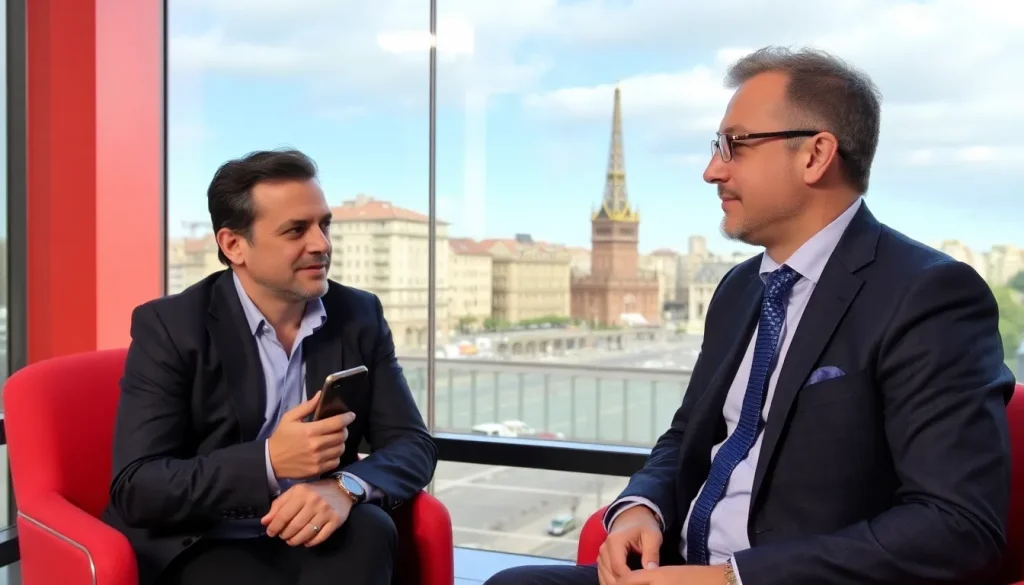Interview with Álvaro de Los Santos, Telemadrid Journalist

In the rapidly evolving landscape of journalism, where social media plays a pivotal role, adapting to change is crucial. Álvaro de los Santos, a prominent journalist and community manager at Telemadrid, shares his insights on navigating this dynamic environment. His perspective not only highlights the challenges but also the opportunities that modern technology presents to the media industry.
- the transformation of journalism in the age of social media
- benefits and challenges of social media for journalists
- traditional media's adaptation to digital transformation
- shortcomings of traditional media in the digital era
- the role of platforms like youtube in modern media
- the evolution of viewing habits among audiences
- the essence of authenticity in journalism
- the future of journalism: a collaborative approach
- the perception of influencers in the media landscape
- the defining hashtags of journalism's future
Social media has fundamentally altered the way journalism operates. According to Álvaro, the shift has been monumental: “We used to be the first to inform, but now citizens often break the news themselves via social media.” This democratization of information means that news reaches audiences faster and often with accompanying media such as photos and live videos.
This evolution has given rise to a new set of expectations for journalists. They must not only report news but also verify and contextualize information swiftly. The role of the journalist now encompasses being a gatekeeper of quality information amidst an overwhelming influx of user-generated content.
While social media offers tremendous advantages, it also presents challenges. Álvaro emphasizes that these platforms provide journalists with tools to gather real-time information directly from the scene of news events. This immediacy enhances the reporting process significantly:
- Access to immediate updates from citizens on the ground.
- Opportunities for collaborative reporting with the audience.
- Real-time feedback on viewer preferences and interests.
However, with these tools comes the responsibility to ensure accuracy. Álvaro warns, “We must be very cautious and continue to uphold quality journalism by verifying information before publishing.” This sentiment highlights the critical balance journalists must strike between speed and reliability in their reporting.
traditional media's adaptation to digital transformation
When asked whether traditional television has effectively harnessed new technologies, Álvaro acknowledges that while progress has been made, there is still a long way to go. “The pace of change is rapid, and adaptation is essential,” he notes. Social media serves as a vital channel for understanding viewer sentiment and fostering engagement.
Despite the merits of these platforms, Álvaro points out that some journalists remain resistant to embracing social media. “There are still newsrooms where some journalists are hesitant to engage in this world,” he explains. Educating colleagues on the necessity of maintaining a personal brand online and promoting their work is crucial for collective success in the industry.
shortcomings of traditional media in the digital era
One striking example of traditional media's struggle to adapt is found in radio. Álvaro argues that many stations have yet to recognize the importance of blending audio with video content, saying, “Listeners should be given the option to not only hear their favorite shows but also to see them.” This hybrid approach can significantly enhance audience engagement.
Moreover, Álvaro highlights the generational shift in leadership roles within media organizations. Younger leaders, often more tech-savvy and aware of digital trends, are reshaping the industry. He believes that seasoned journalists must continuously upgrade their skills to stay relevant. In his case, he has taken to piloting drones to enhance his reporting capabilities, showcasing his commitment to innovation.
the role of platforms like youtube in modern media
Álvaro views YouTube as a valuable opportunity for media outlets to showcase their work globally. However, he recognizes the challenge of monetization, stating, “The revenue generated is often insufficient.” This dilemma raises questions about the sustainability of traditional media in a digital-first world.
the evolution of viewing habits among audiences
Today’s viewers enjoy unparalleled freedom in choosing when and how to consume content. As Álvaro puts it, “People want the power to decide when to watch their favorite series or daily news.” This shift has compelled television networks to rethink their programming strategies and delivery methods.
Key factors driving this change include:
- The demand for on-demand content.
- The preference for personalized viewing experiences.
- The ability to access content across various devices.
the essence of authenticity in journalism
To capture and retain viewers, Álvaro emphasizes the importance of authenticity in journalism. “Naturalness and being true to oneself are crucial,” he asserts. In a world saturated with personalities, audiences increasingly favor relatable figures over larger-than-life personas.
Additionally, quality content remains paramount. By focusing on delivering valuable and well-crafted journalism, media professionals can gradually build an audience that appreciates their work, even if it takes time.
the future of journalism: a collaborative approach
When asked about what would encourage audiences to invest in quality content, Álvaro reiterates the need for high standards. “Offering valuable content is key,” he notes. This principle extends to his personal use of social media, which he employs to stay informed and engage with others genuinely.
Álvaro's influence in the digital realm serves a greater purpose. As he puts it, “If I grow on social media, I can help more people, whether it’s raising awareness of issues or assisting in finding missing persons.” His understanding of influence centers on service to the community rather than self-promotion.
the perception of influencers in the media landscape
Álvaro's thoughts on the terms “guru” and “influencer” illustrate the nuances of modern digital culture. He considers “guru” to carry a negative connotation, associated with inflated egos and posturing. In contrast, “influencer” feels more approachable and relatable, emphasizing genuine connections.
As he navigates his career, Álvaro expresses a desire to interview iconic figures such as Raphael, the legendary singer, who embodies the term “influencer” in the music world. He is also intrigued by the prospect of engaging with tech giants like Mark Zuckerberg on platforms like Twitter, illustrating his curiosity about the intersection of technology and media.
In summarizing his vision for journalism, Álvaro succinctly captures the urgency and dynamism of the field with the hashtag: #CorreQueTePillan, which translates to “Run, or you'll get caught.” This phrase encapsulates the fast-paced nature of news today, where staying ahead of the curve is essential for success.




Leave a Reply